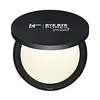What's inside
What's inside
 Key Ingredients
Key Ingredients

No key ingredients
 Benefits
Benefits

No benefits
 Concerns
Concerns

No concerns
 Ingredients Side-by-side
Ingredients Side-by-side

Water
Skin ConditioningAlcohol Denat.
AntimicrobialGlycerin
HumectantPropanediol
SolventSilica
AbrasivePhenoxyethanol
PreservativeMethyl Methacrylate Crosspolymer
Kaolin
AbrasiveZinc Gluconate
Skin ConditioningAloe Barbadensis Leaf Juice Powder
Skin ConditioningParfum
MaskingMenthoxypropanediol
MaskingCocos Nucifera Fruit Juice
EmollientHamamelis Virginiana Water
AstringentAllantoin
Skin ConditioningHydrolyzed Silk
HumectantAvena Sativa Kernel Flour
AbrasiveLinalool
PerfumingSalicylic Acid
MaskingPropylene Glycol
HumectantPentylene Glycol
Skin ConditioningHydrolyzed Rice Protein
Skin ConditioningLimonene
PerfumingCitric Acid
BufferingSoluble Collagen
HumectantSodium Benzoate
MaskingPotassium Sorbate
PreservativeDisodium EDTA
Trisodium EDTA
Water, Alcohol Denat., Glycerin, Propanediol, Silica, Phenoxyethanol, Methyl Methacrylate Crosspolymer, Kaolin, Zinc Gluconate, Aloe Barbadensis Leaf Juice Powder, Parfum, Menthoxypropanediol, Cocos Nucifera Fruit Juice, Hamamelis Virginiana Water, Allantoin, Hydrolyzed Silk, Avena Sativa Kernel Flour, Linalool, Salicylic Acid, Propylene Glycol, Pentylene Glycol, Hydrolyzed Rice Protein, Limonene, Citric Acid, Soluble Collagen, Sodium Benzoate, Potassium Sorbate, Disodium EDTA, Trisodium EDTA